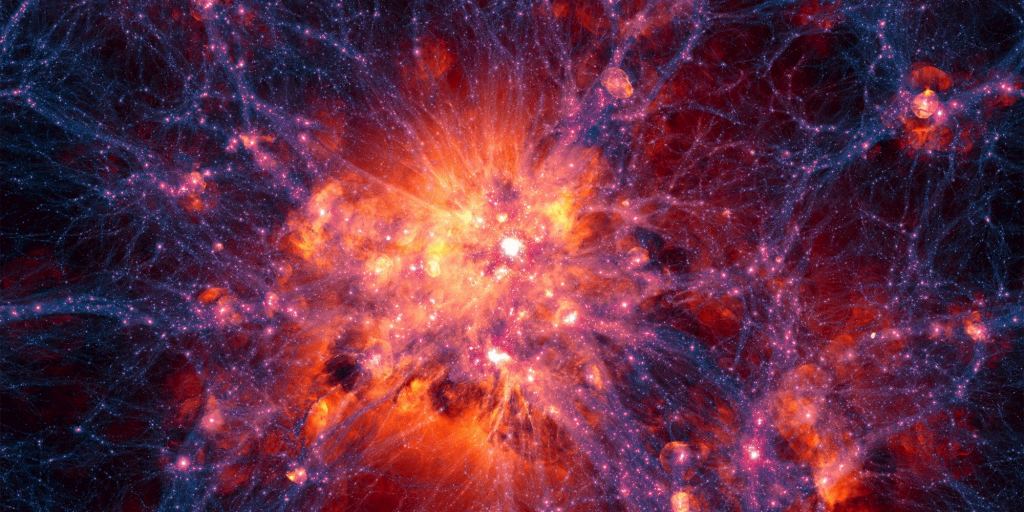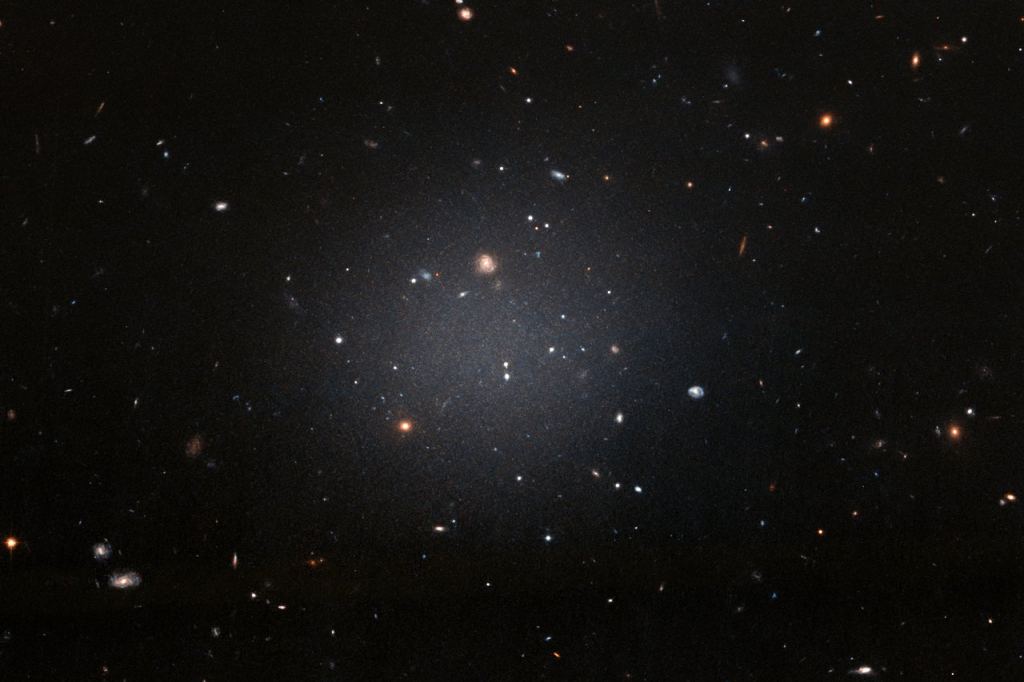Galaxies Have Been Found With no Dark Matter at all
By Matt Williams
One of the greatest cosmological mysteries facing astrophysicists today is Dark Matter. Since the 1960s, scientists have postulated that this invisible mass accounts for most of the matter in the Universe. While there are still many unresolved questions about it – i.e., What is it composed of? How do we detect it? What evidence is there beyond indirect detection? – we have managed to learn a few things about it over time.
For example, astrophysicists have observed that Dark Matter played a vital role in the formation of galaxies and is responsible for keeping them gravitationally bound. However, when an international team of astronomers observed the ultra-diffuse galaxy AGC 114905, they found no evidence of Dark Matter at all. If these observations are accurate, this discovery could force scientists to reevaluate their cosmological models and the way we look at the Universe.
The research team was led by researchers from the Kapteyn Astronomical Institute at the University of Groningen and the Netherlands Institute for Radio Astronomy (ASTRON). They were joined by astronomers and cosmologists from the University of Durham, Valparaiso University, and the University of Illinois. Their research findings were accepted for publication and will appear in the Monthly Notices of the Royal Astronomical Society.
As the team explained in a previous study, the road to this discovery began when Pavel Mancera Piña – a Ph.D. student with the University of Groningen and ASTRON and the lead author on both papers – and his colleagues observed six galaxies that appeared to have little or no dark matter. These findings contradicted prevailing theories about dark matter, which states that all galaxies (especially ultra-diffuse dwarf galaxies) could not exist without dark matter to hold them together.
Piña and his colleagues were instructed to retake their measurements and used the Very Large Array (VLA) in New Mexico to conduct an observation campaign of one galaxy in particular. This was AGC 114905, a gas-rich, ultra-diffuse dwarf galaxy located about 250 million light-years away in the constellation Pisces. This designation refers to the fact that it is a low luminosity galaxy with far fewer stars than galaxies like ours (despite being comparable in size).
During this campaign, the team collected data on the rotation of gas in AGC 114905 for 40 hours between July and October 2020. They then made a graph that showed the distance of the gas from the center of the galaxy (x-axis) and the rotational speed of the gas (y-axis), which is a standard way of revealing the influence of dark matter. This graph showed that the presence of normal matter alone could explain the motions of the gas in AGC 114905.
As Piña explained in a recent Royal Astronomical Society press release:
“This is, of course, what we thought and hoped for because it confirms our previous measurements. But now the problem remains that the theory predicts that there must be dark matter in AGC 114905, but our observations say there isn’t. In fact, the difference between theory and observation is only getting bigger.”

As Piña and his colleagues indicate in their study, there are several possible explanations for the lack of dark matter. For starters, AGC 114905 may have been stripped of its dark matter through tidal interaction with neighboring large galaxies. They also adjusted the parameters of the Lamba-Cold Dark Matter (?CDM) cosmological model and alternate theories to General Relavity to obtain values consistent with their observations. But as Piña explained, none of it worked:
“But there are none. And in the most reputed galaxy formation framework, the so called cold dark matter model, we would have to introduce extreme parameter values that are far beyond the usual range. Also with modified Newtonian dynamics, an alternative theory to cold dark matter, we cannot reproduce the motions of the gas within the galaxy.”
Another possibility they considered was that their estimates of the estimated angle at which they were observing the galaxy were off (which would have altered their conclusions considerably). But Tom Oosterloo (a researcher with ASTRON and a co-author on the paper) indicated, that angle would have “to deviate very much from our estimate before there is room for dark matter again.”
This is not the first time astronomers observed a galaxy that appeared to have little or no Dark Matter. In 2018, a team of American and Canadian astronomers led by Pieter van Dokkum (the Sol Goldman Family Professor of Astronomy at Yale) discovered an ultra-diffuse galaxy (NGC1052–DF2) that was similarly bereft of dark matter. The techniques and measurements employed by Piña and his colleagues provided more robust results.

In the near future, Piña and his colleagues will examine another ultra-diffuse dwarf galaxy in detail. If they again find no traces of Dark Matter, it will confirm that galaxies are out there that defy the ?CDM model. This could be good news, as it will apply new constraints on Dark Matter and its role in galactic and cosmic evolution. After all, most of the greatest breakthroughs in history happened when experimental results contradicted established models.
To paraphrase Isaac Asimov, the most exciting phrase to hear in science is not ‘Eureka,’ but ‘That’s funny….’
The post Galaxies Have Been Found With no Dark Matter at all appeared first on Universe Today.

December 11, 2021 at 03:21AM
via Universe Today read more...

Post a Comment